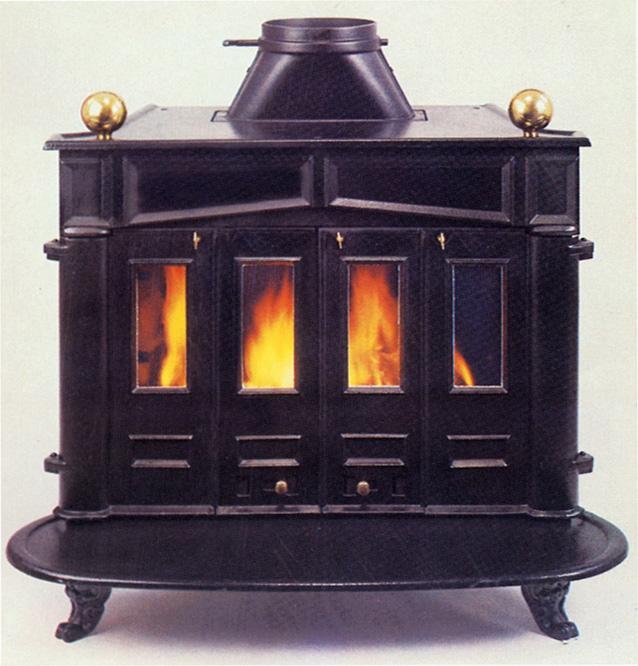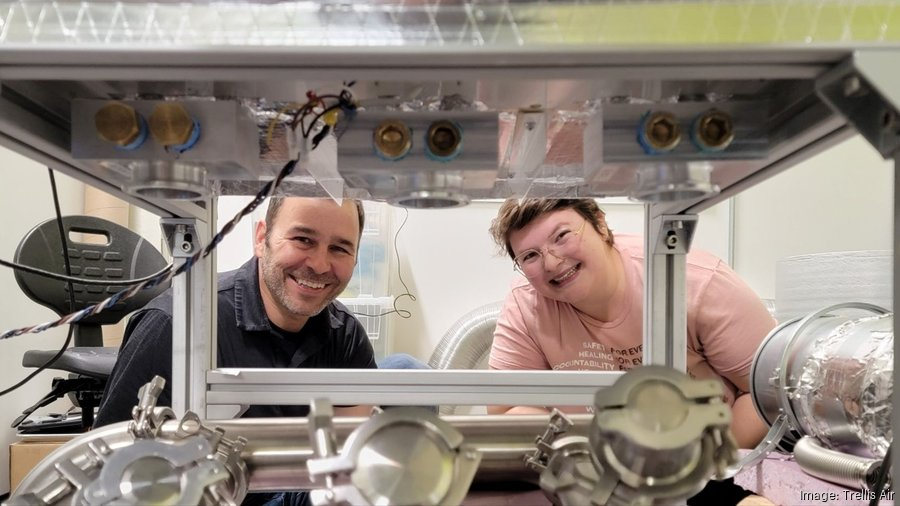The Franklin stove, an ingenious invention attributed to Benjamin Franklin, revolutionized heating in the 18th century by maximizing efficiency and comfort in homes. Historical climate adaptation during times of severe cold, like the harsh winter of 1740-41, prompted Franklin to create this innovative fireplace that consumed less fuel while distributing heat more effectively. As Joyce Chaplin explores in her latest work, Franklin’s design not only reshaped domestic living but also sparked discussions around atmospheric science, as he linked indoor heating principles to outdoor weather phenomena. This invention is often overshadowed by Franklin’s more famous innovations, yet it holds significant implications for our understanding of technology and comfort during periods of extreme weather. By delving into the story of the Franklin stove, we uncover not just an artifact of the past, but a vital piece of Benjamin Franklin’s legacy and his contributions to American ingenuity.
The remarkable Pennsylvania fireplace, often referred to as the Franklin stove, stands as a testament to Benjamin Franklin’s creativity and forward-thinking approach to heating technology. This unique stove, envisioned during an era of severe winter weather, showcased Franklin’s ability to adapt scientific principles to practical domestic needs. By improving heating efficiency and reducing wood consumption, Franklin’s invention addressed both comfort and resource challenges faced by colonists. Joyce Chaplin’s research highlights how these advancements laid groundwork for our modern understanding of thermal dynamics and atmospheric interactions, linking the realms of domestic technology with broader environmental considerations. Such explorations emphasize how historical innovations like the Franklin stove serve not only as reflections of their time but also as enduring reminders of humanity’s ongoing struggle with climate adaptation and resource management.
The Legacy of Benjamin Franklin’s Inventions
Benjamin Franklin, renowned not only as a founding father but also as a prolific inventor, left an indelible mark on the realms of science and technology. His array of inventions, including the lightning rod and bifocals, has often overshadowed some of his other significant contributions, most notably the Franklin stove. The Franklin stove, a remarkable innovation in heating technology, played a crucial role in improving domestic comfort during a time of extreme climatic conditions, showcasing Franklin’s ingenuity in response to environmental challenges.
Chaplin’s exploration of Franklin’s inventions in her latest work highlights how his scientific curiosities fueled innovations that could adapt to and mitigate the impact of climate issues. By introducing the Franklin stove, he not only focused on comfort and efficiency but also on reducing deforestation by optimizing wood usage. This commitment to sustainability and enhancement of quality of life underscores how Franklin’s inventions were deeply intertwined with the pressing concerns of his time, making him a pivotal figure in both the history of science and American ingenuity.
Franklin Stove: Technology and Climate Adaptation
The Franklin stove emerged during a particularly harsh winter marked by extreme cold and societal disruptions due to resource scarcity. As Joyce Chaplin notes, Franklin’s motivation to develop this innovative heating system stemmed from the need to provide efficient warmth while reducing the reliance on firewood—a precious resource during a time when deforestation was becoming a significant concern. This exemplifies how Franklin’s inventions were not only practical but also reflections of the changing environmental landscape, a fundamental aspect of historical climate adaptation.
Employing convection principles, the Franklin stove allowed for superior heat distribution compared to traditional fireplaces. This technological advancement was a game-changer for households, allowing them to sustain warmth more effectively, thus improving comfort during dire weather conditions. By integrating elements of atmospheric science into his designs, Franklin managed to create a solution that mirrored natural processes, offering both functional utility and an early recognition of the interconnectedness of technology and climate.
Understanding Atmospheric Science Through Franklin’s Lens
At the heart of Franklin’s endeavors was a desire to comprehend and harness the forces of nature—an ambition that significantly contributed to the development of atmospheric science. Chaplin emphasizes that Franklin approached natural phenomena systematically, using the principles he applied in his stove designs to illustrate concepts such as air movement and weather patterns. His work laid foundational ideas that would eventually shape scientific understanding of systems like the Gulf Stream, linking domestic technology with broader scientific inquiry.
By analyzing the functionality of the Franklin stove, one can see how Franklin’s scientific method was applied not only to his inventions but to a wider understanding of climate. He communicated complex scientific theories in a manner that was accessible to the masses, which helped cultivate a society more aware of the environment. Franklin’s blend of practical ingenuity and scientific inquiry established a precedent for future generations, demonstrating that understanding atmospheric processes could lead to innovations that improve human life.
Joyce Chaplin’s Insights into Franklin’s Innovations
Joyce Chaplin’s exploration of Franklin’s work provides not only a scholarly perspective on his inventions but also sheds light on Franklin’s character and intellect. Chaplin’s insights reveal Franklin as a multifaceted individual, driven by curiosity and social responsibility. Her analysis of the Franklin stove serves as an entry point to discuss his broader scientific mindset, as he pivoted from a career as a humble printer to addressing complex problems through inventive solutions.
Chaplin emphasizes that Franklin’s innovations are crucial for understanding the historical context of climate adaptation. Her research highlights the socio-economic factors influencing Franklin’s work, including the rampant deforestation and resource management challenges of the 18th century. By focusing on his adaptations to these pressing realities, Chaplin presents Franklin as a forward-thinking innovator whose inventions were deeply embedded in the societal struggles of his time, a narrative that invites further exploration into how inventions evolve within specific historical frameworks.
The Importance of Technological Comfort in Franklin’s Era
In today’s world, where climate change poses an unprecedented threat, understanding the historical context of technological comfort is crucial. Franklin’s work with the stove was not just about providing warmth; it was also about creating a home environment that countered the harsh realities of an unforgiving climate. This aspect of Franklin’s innovations resonates in contemporary discussions about how technology can facilitate comfort while also addressing sustainability.
Chaplin argues that Franklin’s inventions can serve as a valuable lesson for today’s technological endeavors. As society grapples with the combined challenges of resource depletion and climate disruption, revisiting Franklin’s pragmatic approach—balancing comfort with environmental stewardship—can guide current and future innovations in heating and energy use. The legacy of the Franklin stove is a testament to the importance of technological comfort that emphasizes efficiency and environmental responsibility, a balance that remains relevant in today’s quest for sustainable solutions.
Franklin’s Influence on Modern Energy Discussions
Franklin’s pioneering spirit in the realm of energy efficiency foreshadowed many modern discussions about sustainable technology and energy sources. His innovations, particularly the Franklin stove, highlight the critical importance of optimizing fuel consumption amid resource scarcity. In echoing Chaplin’s reflections, one can see how Franklin’s insights were not merely products of their time but are also highly relevant to ongoing debates around energy use and climate action.
By analyzing his methods and motivations, we can draw parallels to contemporary energy policies and practices. Franklin’s advocacy for smoke reduction and better heating efficiencies reflects a similar ethos in today’s sustainable energy discussions. Efforts to mitigate air pollution and seek cleaner energy alternatives resonate with Franklin’s early recognition of the links between energy consumption, environmental health, and societal advancement. Thus, Franklin’s legacy continues to inform how we approach energy challenges in an age increasingly concerned with climate change.
The Connection Between Franklin’s Science and Social Issues
A critical aspect of Franklin’s legacy, as discussed by Chaplin, is the complex interplay between his scientific innovations and social issues such as slavery and economic inequality. Chaplin’s research uncovers that Franklin’s engagement with the Pennsylvania iron industry involved the use of enslaved labor, raising important questions about the ethical implications of scientific advancement. This intersection alerts us to the realities of historical progress often being built on overlooked social inequities.
By examining these dimensions, Chaplin encourages a re-evaluation of Franklin’s contributions to science and technology within the context of American history. Acknowledging the moral complexities of Franklin’s legacy not only enriches our understanding of his innovations but also serves as a reminder that the pursuit of knowledge and comfort must be weighed against ethical considerations. By situating Franklin’s work within these broader social frameworks, we gain insights that are crucial for addressing contemporary societal challenges intertwined with scientific progress.
Towards a Multifaceted Approach to Climate Solutions
In her closing reflections, Chaplin warns against oversimplifying the quest for climate solutions by seeking singular answers, much like the approach Franklin took. His recognition of coal as an energy source does not justify its unregulated use in the modern era. Instead, a multifaceted strategy that incorporates various technological innovations, similar to those Franklin championed, is critical for addressing today’s climate crises.
Chaplin’s insights underline the importance of integrating diverse solutions to tackle climate challenges. Just as Franklin’s stove represented an evolutionary step in energy technology, current and future inventions must also reflect a comprehensive understanding of environmental impacts. By fostering a culture of innovation that embraces complexity and adaptability, we honor Franklin’s legacy while addressing the pressing demands of our time.
Frequently Asked Questions
What is the Franklin stove and why is it significant in Benjamin Franklin’s inventions?
The Franklin stove, developed by Benjamin Franklin during the harsh winter of 1740-41, is a prototype fireplace designed to improve heating efficiency. It consists of a flatpack of iron plates that colonists could easily assemble, making rooms warmer while using less wood. This invention is significant as it reflects Franklin’s adaptation to extreme climate conditions and highlights his contributions to atmospheric science and technology.
How did the Franklin stove contribute to historical climate adaptation?
The Franklin stove exemplifies historical climate adaptation by providing a more efficient heating solution during the Little Ice Age, when harsh winters severely impacted society. Franklin’s design reduced dependence on firewood, which was becoming scarce due to deforestation, thus helping colonists face cold winters while promoting a more sustainable use of resources.
What role did the Franklin stove play in advancements in atmospheric science?
The Franklin stove influenced advancements in atmospheric science by illustrating convection principles—where warm air rises and cool air sinks. Franklin applied these principles not only to indoor heating but also to explain outdoor phenomena, such as the Gulf Stream, thereby bridging the gap between technology and environmental awareness during his time.
In what ways did Joyce Chaplin’s book address the legacy of the Franklin stove?
Joyce Chaplin’s book, “The Franklin Stove: An Unintended American Revolution,” addresses the legacy of the Franklin stove by exploring its impact on weather, technology, and comfort. Chaplin emphasizes how this invention sparked new thinking about heating solutions and environmental challenges, illustrating Franklin’s vision for using science to improve life amid adversity and his commitment to addressing climate issues.
What were Franklin’s motivations behind the development of the Franklin stove?
Franklin’s motivations for developing the Franklin stove included a desire to enhance indoor comfort, minimize firewood consumption, and reduce smoke emissions from burning wood. His concern for air quality, particularly in polluted cities like London, drove him to innovate a heating system that efficiently reburned smoke, anticipating modern scientific discussions on air quality and health.
How does the Franklin stove relate to Benjamin Franklin’s broader scientific contributions?
The Franklin stove is closely related to Benjamin Franklin’s broader scientific contributions as it embodies his innovative spirit and commitment to addressing practical problems through science. His work on the stove intertwined with his research in atmospheric phenomena, showing that his inventions were not only functional but also grounded in a deeper understanding of environmental science.
| Key Point | Details |
|---|---|
| Franklin Stove Innovation | Developed during the harsh winter of 1740-41 to improve heating efficiency. |
| Climate Adaptation | Franklin’s stove was designed to consume less wood, fitting the needs of a warming indoor environment. |
| Scientific Contributions | Franklin’s work on his stoves contributed to the understanding of atmospheric phenomena like the Gulf Stream. |
| Iterations of Design | Over 50 years, Franklin created five versions of the stove, transitioning from wood to coal as fuel. |
| Reflections on Franklin | Chaplin’s research highlights Franklin’s complex legacy beyond just his famous inventions like the lightning rod. |
| Environmental Insights | Franklin recognized the challenges of increasing deforestation and its impact on fuel costs for settlers. |
| Modern Context | Chaplin emphasizes the need for multiple solutions to current climate challenges, paralleling Franklin’s innovative spirit. |
Summary
The Franklin stove represents a pivotal innovation in heating technology that not only transformed domestic comfort but also contributed significantly to scientific understanding during its time. As highlighted in Joyce Chaplin’s exploration, Franklin’s design emerged as a vital response to the severe climate challenges of the 18th century, showcasing his ingenuity and foresight in engineering. The stove’s efficiency in wood usage and its adaptations over the years underscore Franklin’s lasting influence on both technology and our perception of environmental stewardship. Today, the legacy of the Franklin stove prompts a critical examination of our approach to climate change, reminding us of the importance of diverse solutions in addressing contemporary environmental challenges.



